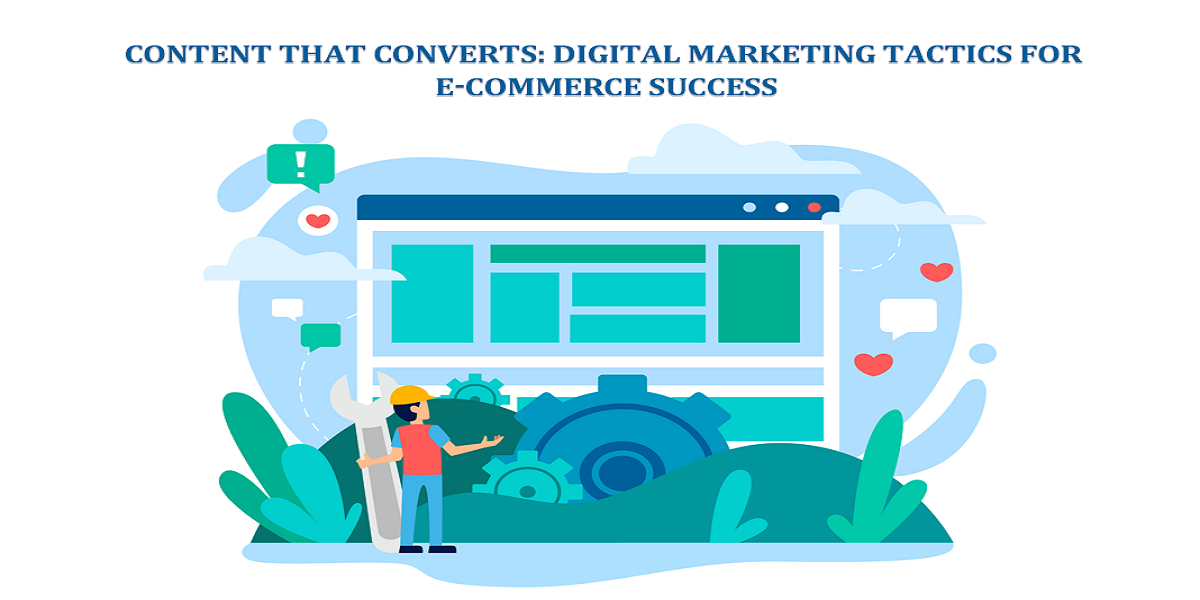
Building E-commerce Apps for Android: Strategies for Success
- By Debu Singh
- 25-07-2023
- Mobile App Development
Today, in the age of digital technology, online shopping on mobile devices has seen exponential growth in acceptance. In the wake of this, companies are more focused on creating online shopping apps on Android in order to access the growing number of shoppers who are mobile. The development of a profitable e-commerce application involves careful planning, strategic execution and adhering to the best practices for Android app development. In this blog article, we'll look at the most effective strategies to build eCommerce apps designed for Android which can help drive growth and enhance user interaction.
Best Strategies to Build E-commerce Apps for Android
1. Understanding the Android E-commerce Landscape
Before you begin to work on app development the first step is to have a thorough understanding of the Android eCommerce landscape. Studying market trends, customer behaviors, and the competitor's apps could provide important insights, and aid in defining a distinct offer.
2. User-Centric Design for E-commerce Apps
Prioritizing Intuitive Navigation
A user-friendly and attractive layout is crucial for the design of e-commerce applications. Include simple navigation, clear classification of the products and seamless checkout procedures. Optimize the application for different size screens.
Enhancing Visual Appeal and Branding
Design visually pleasing user interfaces that are in line with the brand's identity. Make use of eye-catching imagery with consistent color schemes and appealing typography to boost your user experience overall and increase your brand's reputation.
3. Leveraging Mobile Commerce Features and Functionality
Incorporating Product Search and Filters
Create a comprehensive function for product searches that permits users to quickly find items. Add filters that allow users to narrow results for searches according to prices, categories as well as ratings and other criteria that are relevant.
Implementing Reviews and Ratings
Create a platform for customers to leave comments and ratings for items. The ability to display genuine reviews from users builds trust and aids prospective buyers to make informed buying choices.
4. Optimizing Performance for Seamless User Experience
Minimizing Loading Times
Improve app performance by reducing loading time. Reduce images, use lazy loading, and utilize caching to speed up loading and a seamless browsing user experience.
Optimizing Image Sizes and Caching
For improved performance, maximize the size of images without degrading quality. Use the appropriate formats and algorithms to minimize file size and speed up loading. In addition, you can use caching strategies to save frequently used data locally on your device, which reduces the requirement to make repeated requests to servers.
5. Implementing Secure Payment Gateways
Integrating Trusted Payment Providers
Make sure you integrate secure and reliable payment gateways within your online store. Partner with trusted payment service providers who provide safe and smooth transactions, ensuring customers are secure when buying online.
Ensuring SSL Encryption and Data Security
Secure data by prioritizing it with SSL encryption of all information sent between your app and server. Guard sensitive user data including payment details as well as personal information, from possible security breaches.
6. Personalization and Recommendations in E-commerce Apps
Utilizing User Data for Personalization
Utilize user information, like shopping history, browsing habits and personal preferences for a more personalized experience. Customize product recommendations, offers and offers to specific users, boosting participation and likelihood of conversion.
Providing Tailored Product Recommendations
Create recommendation algorithms that are based on patterns of behavior among users as well as historical information. Offer products that are similar to yours, "Customers also bought" recommendations, or personal collections of products to attract customers by offering pertinent products, ultimately increasing sales opportunities and cross-selling.
7. Integration With Backend Systems and APIs
Seamless Data Synchronization
Create a robust integration with the back-end system, for example, ordering processing, inventory management and Customer relationship management (CRM). Maintain synchronization of data in real-time to ensure accurate information about the availability of the product orders, update information on the order, as well as the customer's information.
Integrating Inventory and Order Management
Automate the management of your inventory and orders through the integration of your application with the backend system. Automated inventory updates as well as order tracking. You can also have seamless communication between your app and backend systems for streamlined delivery of orders.
8. Marketing and Promoting Your Android E-commerce App
App Store Optimization (ASO) Techniques
Improve the visibility of your app on the market through ASO strategies. Perform keyword research to determine appropriate keywords to use in your app's metadata and description. Create compelling titles for your app and descriptions. Make use of attractive videos and screenshots and promote positive user feedback.
Social Media Marketing and Influencer Collaborations
Make use of social media to build buzz and encourage app downloads. Create compelling content, partner with influential bloggers or influencers within your field, create targeted ads and communicate with your followers to help promote your online store's app in a way that is effective.
9. Monitoring and Analyzing App Performance
Tracking User Engagement and Conversion Rates
Use analytics tools to monitor the most important performance metrics like customer engagement, the rate at which conversions are made, and retention rates. Study user behavior in the app, find the points where users drop off and then make informed decisions that optimize the users' experience as well as increase conversions.
Gathering User Feedback and Reviews
Invite users to give feedback and comments on the application. Review and monitor user reviews in the app store for a better understanding of user feedback and pinpoint areas of improvement. Address user issues and improve your app in response to valuable feedback from users.
10. Embracing Continuous Improvement
Iterating Based on User Feedback and Market Trends
Gather feedback from customers regularly and conduct market research in order to discover new trends and changing requirements of customers. Utilize this data to improve and develop your e-commerce application continually. Introduce new features, improve your existing functions, and remain updated with the latest Android app development methods.
Always Updated to the most recent Android Application Development Best Techniques
Be informed of the most recent Android app development methods and the latest technologies. Take part in conferences, workshops and webinars. Also, follow reliable blogs and publications from the industry to keep up-to-date with developments within Android application development. Make use of innovative frameworks, libraries and other tools to improve the speed, security and experience for users of your app for e-commerce.
11. Implementing Customer Support and Feedback Mechanisms
To guarantee customer satisfaction It is essential to offer reliable customer service methods and systems for collecting feedback. Use the strategies below to improve customer service and customer feedback:
Live Chat and In-App Messaging
Incorporate a live chat option or in-app messaging service for instant assistance to your customers. It allows customers to get assistance immediately, to ask questions or resolve issues that arise during the shopping journey.
Email and Help Desk Support
Offer support via email or the help desk is a separate system for clients who prefer communicating through support tickets or emails. Make sure that you respond promptly and set up clearly defined communication channels that address customers' concerns in a timely manner.
Feedback and Rating System
Include a feedback and rating application that allows users to post their opinions, ideas as well as experiences. It not only increases user engagement but can also provide useful insights to improve the app's functionality and features.
12. Streamlining Checkout and Payment Processes
Making it easier to complete the check-out and payment procedures is vital to lower the rate of abandonment and increase the satisfaction of customers. Use these strategies to create a smooth and effective checkout experience.
Guest Checkout and Account Creation
Provide a guest checkout feature for a more efficient purchasing experience for those who don't want to sign up for an account. But, you should also offer customers the option to sign up for an account with advantages like order tracking as well as personalized suggestions.
Saved Payment Methods and Address Autofill
Users can save their payment options in a secure manner within the app, allowing quicker and easier purchases in the future. In addition, add address autofill to cut down on manually entered data, and to reduce the amount of friction when you do the checkout process.
Multiple Payment Options
Give a wide range of payment options that cater to various preferences of customers. These include popular digital wallets, debit/credit cards and payment options online. Find the local, regional and international payment options to ensure a smooth checkout experience for customers all over the world.
Conclusion
Incorporating these factors into your e-commerce application design strategy, you will increase your user's engagement, boost client satisfaction and boost the performance of your Android application. Be sure to modify these methods according to your strategy for business, the target audience as well as industry trends. Monitor user feedback as well as app performance and the market to improve your application and keep one step ahead of competitors. By ensuring that you have a well-planned, flawless execution, and an emphasis on features that are user-centric and features, your Android eCommerce app could turn into a highly effective tool for creating sales, increasing loyal customers and the goal of business growth.
Recent blog

How NASA Uses Web Design to Optimize User Experience in Space Control
Web Design | 03-05-2024
Content that Converts: Digital Marketing Tactics for E-Commerce Success
E-commerce | 02-05-2024.png)




